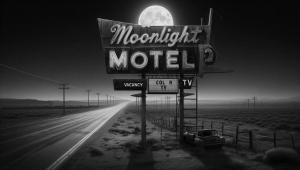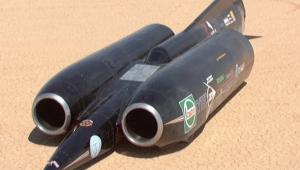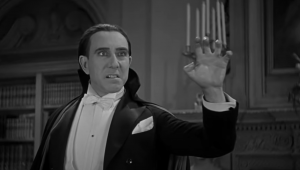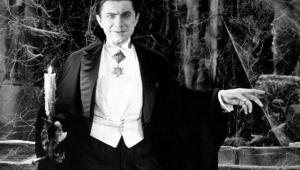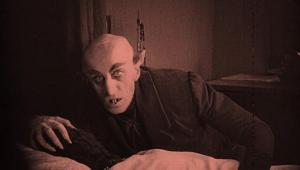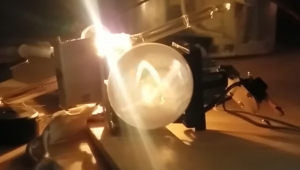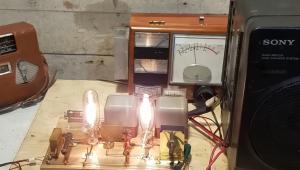This is such a nice open letter reply. Hope the person who owns the SC400 sees this and responds . Impressed that you were called to tune the system in Lexus at their inception. Awesome !
Thank You, Jay Homel

The February/March 2021 issue of Sound & Vision contained your letter to the editor in which you described your immense satisfaction with the Nakamichi sound system in your 1997 Lexus SC400. I am greatly relieved to hear that you like it because, well, I am the guy who tuned it. Allow me to tell you the back story.
I got a call from Toyota in 1988. They asked if I would work with their suppliers to tune the sound systems in a new brand of cars to be called Lexus. I agreed, grabbed my CD wallet, and flew out to the Toyota facility in Torrance, CA. Sitting there was a preproduction prototype of the first Lexus vehicle, the LS400. I spent two weeks there, working with engineers from Pioneer and Nakamichi, the latter supplying the premium sound system.
One day I was auditioning different tweeters and equalizations, trying to dial in the high-frequency sound. It measured flat, but I just didn’t like it. Finally, I pulled off a tweeter grille cover and took a close look. There was some internal bracing that looked problematic, and I also thought the percentage open area of the grille was lacking. I consulted with the Nakamichi engineers and they concurred.
Through a translator, I asked the chief Lexus engineer if we could change the grille. He winced, but excused himself and called headquarters in Nagoya, Japan. He came back and informed me that at this late stage any change would be very expensive. I forget the exact amount, but I am thinking he estimated somewhere in the neighborhood of $100,000. Then he asked me two questions that I will never forget.
“Mr. Pohlmann, would the average listener hear any improvement?” I thought about that for a while, and answered negatively. Then he asked, “Mr. Pohlmann, would you hear a difference?” I did not hesitate, and answered affirmatively. He nodded, and replied, “Okay. We will make the change.”
It was then that I understood how serious there were about this car. They had told me that they wanted everything to be perfect, and they weren’t kidding. Throughout that tuning session, and in subsequent sessions, we did our level best to coax the best possible sound from the system.
Everything was top-notch. Those were the days when cost and weight were less constraining. We added some internal bracing and damping to the rear package tray to avoid resonances from the very meaty subwoofer mounted there. The loudspeakers were equal in quality to high-end home speakers, with die-cast aluminum frames. Every detail was considered. For example, noise-sensing circuits in the radio automatically adjusted the antenna mast height for optimal reception. I could write a book on this sound system.
Evidently, executives at Lexus were pleased with the result and wanted to show it off. They asked conductor André Previn to pick classical and jazz selections for a two-CD sampler that would be placed in the glove box of every new Lexus. From his picks, I sequenced the introduction to Also Sprach Zarathustra as the first track on the first CD. Hey, when you’ve got a good subwoofer, flaunt it. I wrote liner notes for the sampler, chatting up the system, and congratulating the design teams at Pioneer and Nakamichi. At the request of Lexus, I devised a TV commercial touting the sound system. When they graciously asked me to appear in the commercial, wearing a white lab coat, I respectfully declined. (A man needs to know his limits.) For his contributions, Mr. Previn got a free LS400. I did not.
After we finished with the LS400, we subsequently started working on your car, Mr. Homel: the SC400. Honestly, the styling of the LS400 sedan never really appealed to me, but the SC400 coupe really impressed me (and it still looks sharp after all these years). I tuned the heck out of that Nakamichi system because I planned to buy the car for myself and I figured, what the heck, I might as well tune it the way I like it. I tuned many Lexus and Toyota vehicles over many years, before moving on to other car companies.
So, Mr. Homel, thank you for jogging these memories. From the CD liner notes: “The Lexus vision is the pursuit of the ideal... it extends from the showroom to your many years of rewarding Lexus ownership.” Jay, at the time, I didn’t know I was tuning your car, but I’m immensely glad that you’re enjoying it.
Ken C. Pohlmann is an electrical engineer specializing in audio topics as a consultant and writer. He is Professor Emeritus at the University of Miami.
- Log in or register to post comments


This was an interesting article about the rise of factory supplied audiophile grade sound systems. Cars provide transportation sure, but they also can be a real opportunity for both the vendor and the whole audio hobby. Let's say, for instance, I'm a kid whose parents don't have a fine home Hi-Fi but ferry me around in a Lexus. Indulging me (keeps me occupied which believe me is good) they let me listen to music I like in the car. I'm bitten by the bug because now I want to have the experience of elevated sound in my own room at home. That said I think a company can build their reputation quickly and reach more people if they hook up with a car maker. Car makers can also help differentiate their autos if a jaw-dropping quality sound system is inclueded. It's a big win/win. I think it would be fun to have a quarterly "Car Watch" column that runs down the currently available factory sound systems in "mostly affordable" vehicles. In closing please explain, other than a money grab, why the latest VW vehicles sport Fender branded sound systems? Fender may have some familarity name-wise, but as a 60+ year old audio hobbyist I've never thought of Fender as anything other than a guitar manufacturer.

Jay, I remember Ken tuning the car. I was there. What a walk down memory lane this is. I was there at Toyota Technical Center in Torrance for the last week of the event. I was new engineer working at Pioneer in nearby Long Beach. My job was to make sure I took accurate notes of what Ken was doing during the tuning sessions. I remember we were all wondering what techniques and evaluation CDs he would use. To this day I still use "Hey Nineteen" and "Oronoco Flow" when I evaluate audio systems.
The most interesting was Ken's disc of piano scales...up and down and up and down he listened to scales over and over. Then came out and asked me to see the frequency response curve because it sounded like there was mid-range boost that was bothering him. Sure enough there was. He asked for a reduction of a couple of dB and I took out the headunit and had to change a chip resistor and cap on one of the boards. Then he went back to listening to piano scales over and over. LOL
I stood outside the car taking notes of Ken's every move. Very fond memory of my early career for sure.
Best Regards Ken. I'm glad I stumbled across another one of your articles here. All the best.
Gary
